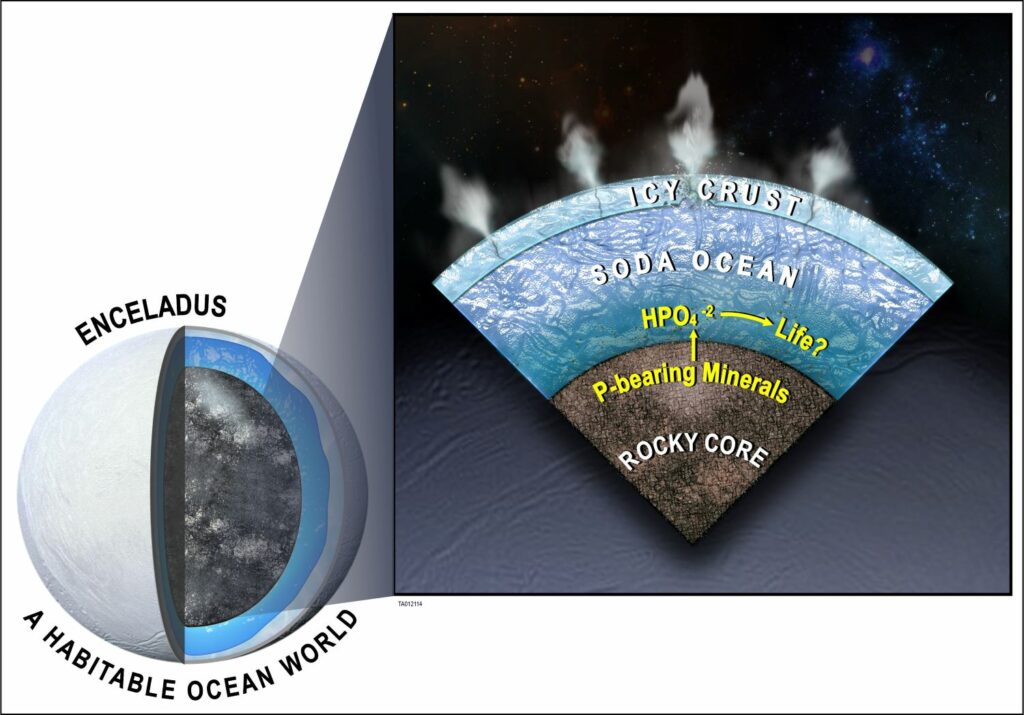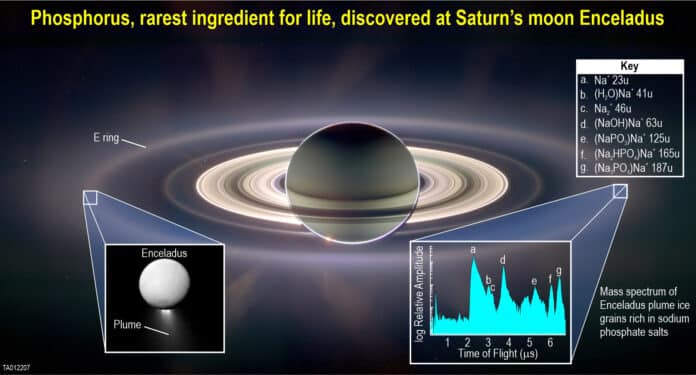Saturn’s moon Enceladus harbors a global ice-covered water ocean. The Cassini spacecraft investigated the composition of the ocean by analysis of material ejected into space by the moon’s cryovolcanic plume.
Earlier geochemical modeling studies suggest that phosphate might be scarce in the ocean of Enceladus and other icy ocean worlds. However, more recent modeling of mineral solubilities in Enceladus’s ocean indicates that phosphate could be relatively abundant.
A group of researchers led by Dr. Christopher Glein of the Southwest Research Institute have found fresh proof that a crucial component for life can be found in the subsurface water of Saturn’s moon Enceladus. Using information from NASA’s Cassini mission, the scientists directly discovered phosphorus in the form of phosphates coming from the moon’s ice-covered global ocean.
Geochemical modeling was utilized in 2020 (reported in 2022) to predict that the ocean of Enceladus should be rich in phosphorus. Researchers have discovered that samples of the plume ice shooting from the deep Atlantic contain large amounts of phosphorus.
The Cassini mission found Enceladus’ underlying liquid water, which also collected samples from a plume of ice grains and gases bursting into space from the moon’s icy surface. The Cosmic Dust Analyzer on Cassini detected sodium phosphates in salt-rich ice grains. The team’s observational findings and analog laboratory tests indicate that phosphorus is easily accessible as phosphates in Enceladus’ ocean.

Southwest Research Institute’s Dr. Christopher Glein said, “We found phosphate concentrations at least 100 times higher in the moon’s plume-forming ocean waters than in Earth’s oceans. Using a model to predict the presence of phosphate is one thing, but finding evidence for phosphate is incredibly exciting. This is a stunning result for astrobiology and a major step forward in the search for life beyond Earth.”
“Geochemical experiments and modeling demonstrate that such high phosphate concentrations result from enhanced phosphate mineral solubility in Enceladus and possibly other icy ocean worlds in the solar system beyond Jupiter. With this finding, the ocean of Enceladus is now known to satisfy what is generally considered the strictest life requirement. The next step is clear – we need to go back to Enceladus to see if the habitable ocean is inhabited.”
Journal Reference:
- Postberg, F., Sekine, Y., Klenner, F. et al. Detection of phosphates originating from Enceladus’s ocean. Nature 618, 489–493 (2023). DOI: 10.1038/s41586-023-05987-9
